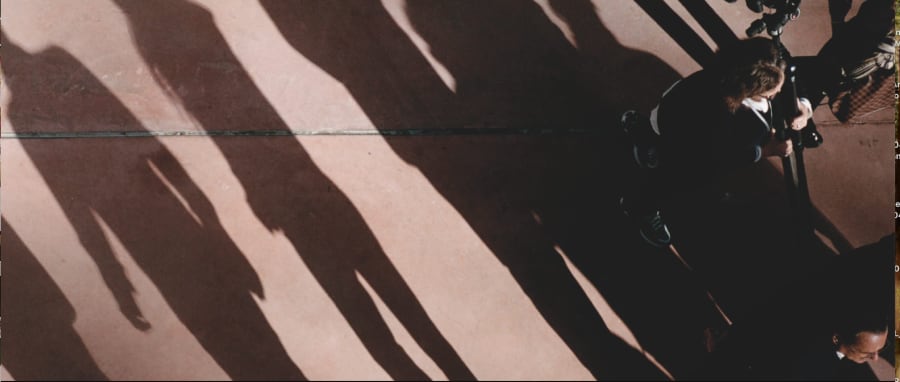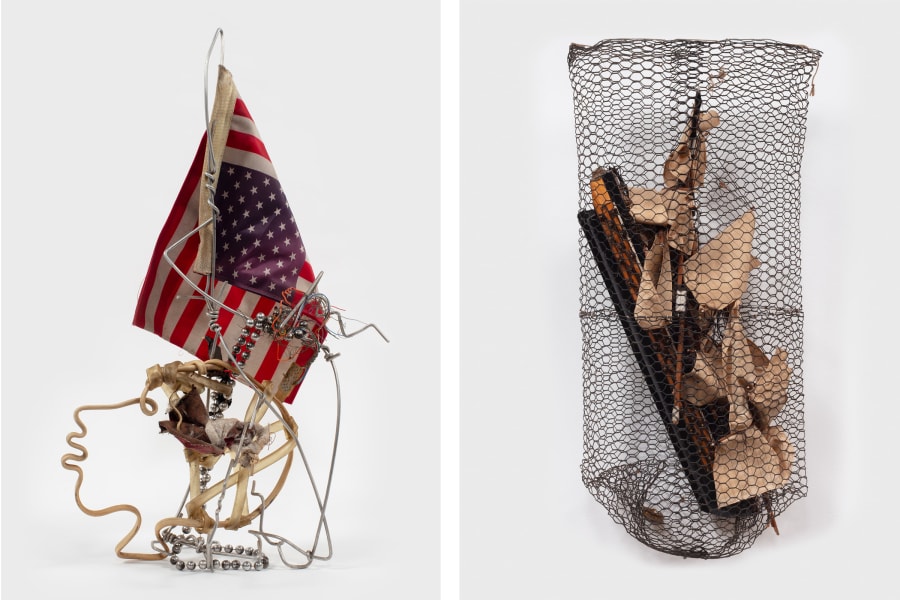We are on the cusp of a major generational shift – and when it comes to art collecting, this can also mean a shift in priorities. Today’s up-and-coming collectors are clear on their objectives: they want to build communities, celebrate the importance of art, and reimagine its place in society. This new generation champions sustainability, more inclusive narratives, and emerging and underrepresented artists. They support grassroots organizations and charitable initiatives – or start their own. From Lagos to Dallas, we meet the next wave of collectors and discover how they got started, what inspires them, and how they plan to fulfill their vision.
Faridah Folawiyo
Faridah Folawiyo is a curator, advisor, and collector based between Lagos and London, and a passionate champion of Black artists. Over the last 9 years, she has cultivated a collection that reflects her intuitive eye. ‘I’m very drawn to atmospheric painting,’ she says. ‘The idea of painters trying to capture the intangible, that’s something I find really powerful.’
Folawiyo began collecting just after graduating, though her interest in art had formed long before then. ‘Even though I didn’t study art history for my undergrad, I took a lot of classes in that department while I was in the US. I even wrote my thesis on a Lebanese photographer. That’s when I realized how deep my interest really was.’ That academic curiosity eventually led her to pursue a master’s degree in art history, but her collecting journey had already begun. ‘I was about 22 when I bought my first piece. It was a photograph by Thabiso Sekgala, the late South African photographer. I’d studied photography, both in practice and in theory, so it’s always been a medium close to my heart.’ Today, her collection includes works by artists such as Remi Ajani, Helena Foster, Turiya Adkins, and longtime collaborator and friend Fadekemi Ogunsanya, whose works blend Yoruba traditions with contemporary storytelling.
Her approach to collecting has also been shaped by her roots in Lagos, where she helped launch Nok, the restaurant of her mother’s concept store, Alára. ‘I worked in the shop during uni, and after graduating, I worked on the restaurant. I’ve done every job there over the years!’ she laughs. ‘That space really shaped my eye. It’s where I first discovered artists like Jean Servais and Hugh Findletar. Alára has always been about discovery. And my mum has incredible taste – that’s definitely influenced me.’ Her connection to Nigeria is integral to her approach: ‘The collecting practices in Lagos feel very community centered,’ she says. ‘Patrons and artists actually get to know each other in a way that’s really meaningful.’
Folawiyo is also the founder of FF Projects, a curatorial platform focused on Black women artists, and a cofounder of No Fronting, a community-driven nightlife initiative. ‘It’s a space for Black women and Queer people to feel free, to dance, and to just be. The two other cofounders are Fadekemi Ogunsanya and Olukemi Lijadu, two artist friends, one is a DJ and sound artist, another is a visual artist, and we bring our practices together for these nights. It started out of necessity: we needed a space like this, and now it’s grown into something way bigger than us. It’s become its own community.’
Dax Luksic
Chilean-born and Milan-based, art collector Dax Luksic began collecting during the COVID-19 pandemic, and in just a few years, he has built a fast-evolving collection of over 80 works. His approach to art collecting reflects a strong sense of cultural loyalty to Chile, while also embracing international artists from across the globe.
‘It was my uncle on my father’s side who sparked my passion for art,’ Luksic explains, recalling his mentor’s collection, which included works by Basquiat, Picasso, and Chilean painter Claudio Bravo. Though he studied business in the US and cofounded Milk & Uni – a food and lifestyle platform offering city guides, dinner clubs, and travel experiences – art soon became a serious focus in his life.
Jessica Nowitzki
Born into a Kenyan-Swedish family and raised between Asia, Europe, and Africa, Jessica Nowitzki grew up surrounded by visual culture. ‘My mum was a true collector of artifacts, masks, objects – anything with a story,’ she recalls. ‘When we moved back to Sweden, our house was wild. You could barely see the wallpaper because there was just so much happening.’
That early experience laid the foundation for her career: Nowitzki would later manage the collection of George Michael and Kenny Goss. ‘It was an unbelievable introduction to the art world,’ she says. Founded in 2007 and based in Dallas, the Goss-Michael Foundation spotlights YBAs including Tracey Emin, Sarah Lucas, and Damien Hirst. ‘George and Kenny weren’t just collecting; they were friends with the artists. We’d host them in Dallas, and visit the artists’ studios in London. It was very personal.’
Nowitzki’s own collection reflects her global perspective, with a focus on contemporary African artists and those from the diaspora, alongside American, European, and Japanese painters. ‘I collect based on instinct and what resonates,’ she explains. ‘I lean into painting, especially work with texture or emotional depth.’ She admires many artists including Derek Fordjour, Lonnie Holley, Wangechi Mutu, and Michael Armitage.
Philanthropy is a key thread in her work. ‘Living in Dallas, the Two x Two gala is a huge part of the art community, raising money for amfAR and the Dallas Museum of Art,’ she says. ‘Artists donate their work with no expectation of return. That kind of generosity is powerful. The art world is an ecosystem. We all have roles to play, and when we come together with purpose, the impact is huge.’
Nowitzki is on the board of the Dallas Museum of Art and the advisory council of the Nasher Sculpture Center. She champions institutions such as the Zeitz Museum of Contemporary Art Africa and various artist-in-residence programs for emerging artists. ‘The most meaningful change,’ she reflects, ‘often comes from outside the center.’
Victoria von Faber-Castell
At 28, Victoria von Faber-Castell is redefining what it means to be both a collector and a custodian of legacy. As part of the ninth generation behind Faber-Castell, the 264-year-old German company renowned for its artist-grade pencils, Victoria lives in Stein, near Nuremberg in Germany, where the family company is based. ‘Drawing is the beginning of any idea,’ she says. ‘It’s the foundation. That’s really shaped how I think about art and collecting.’
Her personal connection to art is both intuitive and emotional. ‘Color and drawing are key threads. In German we say der rote Faden – the red thread that runs through everything.’ Guided more by instinct than trend, Faber-Castell collects based on what moves her. ‘You walk in, you see something, and you get fixated. If I feel something deeply, I know it’s meant for me.’
Influenced by her late father’s passion for German Expressionism, Faber-Castell’s collection leans into expressive color and mark-making, and drawing makes up a large part of it. Beside collecting, she’s exploring new ways for the company to rekindle its long-standing connection to artists. After all, the family still holds a letter from Van Gogh, praising Faber-Castell products. ‘We’re adjacent to the art world, and I want to build that bridge back.’
Sofia Hallström is a writer and artist based in London.
Caption for top image: Derek Fordjour, Pageant, 2018. Courtesy of Deighton Collection, London.
Published on May 27, 2025.


